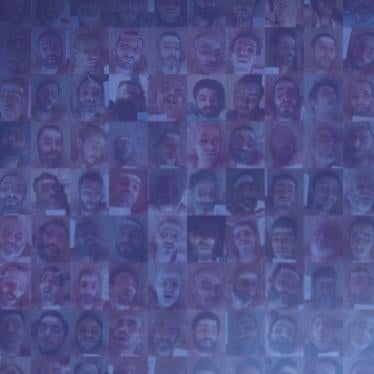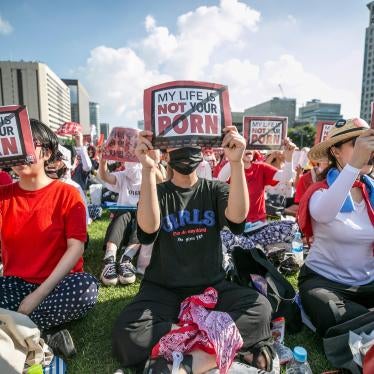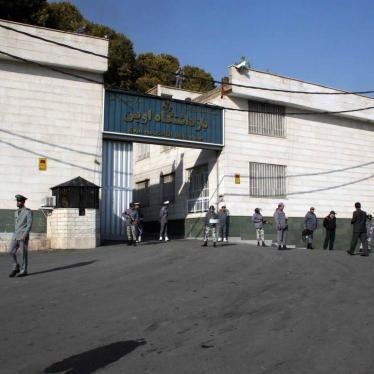(New York) – On April 29, 2014, car bombs in government-held territory in Homs appeared to target civilians and killed dozens of people while mortar attacks in Damascus indiscriminately struck civilian objects killing civilians. Human Rights Watch interviewed people in Homs and Damascus who had information about the car bombings and mortar attacks. In a statement released on April 29, Jabhat al-Nusra, an extremist Islamist group opposed to the Syrian government, claimed responsibility for the twin car bombings in Homs. The perpetrators of the mortar attack are not known but a witness told Human Rights Watch that the mortars came from the direction of territory held by non-state armed groups.
These attacks took place two months after the United Nations Security Council unanimously passed resolution 2139, demanding that all parties in Syria cease the indiscriminate use of weapons in populated areas. Human Rights Watch has also documented the government’s repeated failure to comply with the resolution including the government’s continued indiscriminate air strikes on Aleppo with barrel bombs.
“The UN Security Council orders all sides in Syria to stop attacking civilians and the attacks just keep on coming,” said Joe Stork, deputy Middle East and North Africa director. “The Security Council needs to make clear it means business by imposing sanctions and referring the Syrian situation to the International Criminal Court.”
On April 29, two car bombs detonated in Homs in al-Zahra, a predominately Alawite neighborhood. A video published by al-Akhabriya, a pro-government news agency, shows some of the resulting destruction. A neighborhood resident told Human Rights Watch by phone that he heard the first car bomb go off at 1:15 p.m., and the second bomb minutes later. He said the cars were parked near Abbassiyya Square, a popular commercial area. He estimated that the nearest military object, an army checkpoint, was 1.5 kilometers away.
After the bombing, he visited two hospitals in Homs where first responders were sending the wounded and bodies of the dead. Based on information he received from hospital staff, he said, he estimated that the attacks killed 45 people and wounded 120. A hospital administrator told Human Rights Watch on April 30 that based on information gathered from the same two hospitals, the death toll had risen to 55 and 130 people had been wounded. Children were among the dead, according to the resident, media reports, and videotaped statements.
A second resident, who was on the scene rescuing the wounded and was injured in the second blast, told Human Rights Watch that the blasts were about 10 minutes apart. He described how he was injured and what he witnessed when the bombs went off at approximately 1:10 pm and after:
I was about 6-7 meters from the second explosion. All I could see was smoke and fire. My brother was with me and we tried to pull each other out. I don’t know who took me to the hospital. Two guys ran away from me from fear of all the blood on me. I have shrapnel injuries all over my body. Some are serious … I saw limbs from other victims … some people even 70 meters away were injured. Some people that were watching on their balconies, children, were killed…. The explosions took place at a time when children were leaving school and university students were walking around. There is also a famous market in the area and there were shoppers.
The resident told Human Rights Watch that he believed the death toll had risen to 120. His estimate was based on information he received at three hospitals and different clinics where he spoke to staff that described the death toll.
He also said there were no military objects in the area, with the closest checkpoint being kilometers away.
A mediator involved in negotiations between the government and armed groups based in the Old City of Homs told Human Rights Watch that certain armed groups there have openly threatened to target pro-government or Alawite areas in Homs to pressure the government to allow food into the Old City, which remains under siege. The negotiator said that in one exchange earlier in April, the fighters sought to negotiate safe passage of food into the Old City in exchange for information about where they had placed a car bomb in an Alawite area.
Human Rights Watch has repeatedly condemned the government’s siege tactics, including in the Old City of Homs. But under no circumstances do such tactics excuse or allow the deliberate targeting of civilians or civilian objects.
Jabhat al-Nusra has claimed responsibility for numerouslethal car bombings in areas without military objects in Syria that, taken together, amount to an ongoing and systematic policy of targeting civilians and may amount to crimes against humanity.
Other armed groups have also carried out car bomb attacks in populated areas, including in Homs.
Five other car bombings were reported in Homs in March and April 2014 alone. On April 14, SANA reported and videos corroborated a car bombing in Akrama, a predominately Alawite Homs neighborhood, killing four people and injuring 30.
SANA also reported that on April 9 two car bombs in Karm al-Louz, a mostly Alawite Homs neighborhood,had killed 25 civilians and wounded more than 100. Videos also show damage from the explosion. On April 10, appearing to associate themselves with the Karm al-Louz bombings, Jabhat al-Nusra announced the attack.
On March 17, SANA, al-Akhabriya, and SAMA TV reported that a car bomb had exploded in al-Zahra, killing and injuring civilians. Videos posted on YouTube show the destruction. Jabhat al-Nusra also announced the March 17 strikes, estimating that tens of people were killed and injured.
On March 27, SANA reported that a car bomb had exploded in the al-Arman neighborhood, a mixed Alawite and Armenian Christian neighborhood near Akrama, killing one person and injuring 11. The Syrian Observatory for Human Rights also referenced the reports by state media. In al-Arman, the Arman neighborhood Facebook group also reported that on March 6 a car bomb exploded killing 13 individuals, including children, and wounding 30 others.
On April 29, two mortar shells also struck the Badr el-Din Hussaini educational complex in the al-Shaghour neighborhood of Damascus, a pro-government area, according to a resident from the area who spoke to Human Rights Watch and media reports. The resident, who was involved in the rescue efforts after the strike, told Human Rights Watch that 17 children, approximately 13 years old, were killed in the first mortar attack on the school’s courtyard at approximately 9:30 am. The children were in the courtyard during recess when the mortar hit the school, he said. He said the second mortar, which fell 30 to 45 minutes after the first, killed an additional two to three parents who came to pick up their kids from the school. He estimated that 50 people were injured in the attack based on what he saw on the scene and later in a hospital where the wounded were taken.
The resident, who was near to the site when the first mortar struck and at the school when the second hit, told Human Rights Watch that he believed the mortars came from an area under the control of armed groups in the Yarmouk camp to the south of al-Shaghour.
A video posted by al-Akhabriya shows some of the damage caused by the mortar attacks and some of the injured, including children. The pro-government al-Nazha and Akrama Homs News Network published on its Facebook page the names of 14 people it said had been killed in the strike, and said one additional person whose identity was not known had also been killed. The Facebook page Diary of a Mortar Shell identified 13 of the same people as having been killed and published their names alongside photographs of 13 children, which it said were of the victims.
SANA reported that a separate mortar attack on April 29 in Adra al-Balad in the Damascus countryside killed four civilians, including three children, and wounded 19 when a school being used as a shelter for internally displaced people was hit. Human Rights Watch was not able to independently verify the attack.
Since the fall of 2013 Human Rights Watch has collected evidence of many other mortar strikes that killed civilians in Damascus and Homs neighborhoods under government control. Based on witness statements and investigations of damage sites, Human Rights Watch concluded that these attacks originated in territory held by armed groups. The repeated attacks against known civilian objectives, including schools, mosques, and markets, strongly suggests that these strikes are either indiscriminate or are targeting civilians and civilian objects.
The deliberate targeting of civilians is a war crime, and if carried out in a widespread or systematic way amounts to crimes against humanity. These are crimes of universal jurisdiction, meaning that those responsible, including those complicit in such crimes, can be prosecuted anywhere in the world. As a matter of customary international law, the term “crimes against humanity” includes a range of serious human rights abuses, including murder when committed as part of a widespread or systematic attack by a government or organized armed group against a civilian population.
Those who commit, order, or are otherwise complicit in crimes against humanity should be held individually criminally responsible for their actions. Military and civilian commanders whose subordinates commit war crimes and crimes against humanity are criminally liable if they knew or should have known about the crime and fail to take all reasonable measures to prevent it or submit the matter for criminal investigation.
Military commanders should not, as a matter of policy, order the use of explosive weapons with wide-area effects in populated areas due to the foreseeable harm to civilians, Human Rights Watch said. Military commanders should also never order strikes on protected civilian objects, including schools still in use for education.
In its February 22, 2014 resolution demanding that fighting parties cease using indiscriminate weapons in populated areas, the UN Security Council explicitly expressed “its intent to take further steps in the case of non-compliance with this resolution.”
Given the failure of parties on all sides of the conflict to adhere to the demands of the resolution, the Security Council should impose an arms embargo on any groups implicated in widespread or systematic human rights abuses, including the Syrian government. The Security Council should also impose a travel ban and an asset freeze on anyone credibly implicated in grave abuses, and refer the situation to the International Criminal Court.







